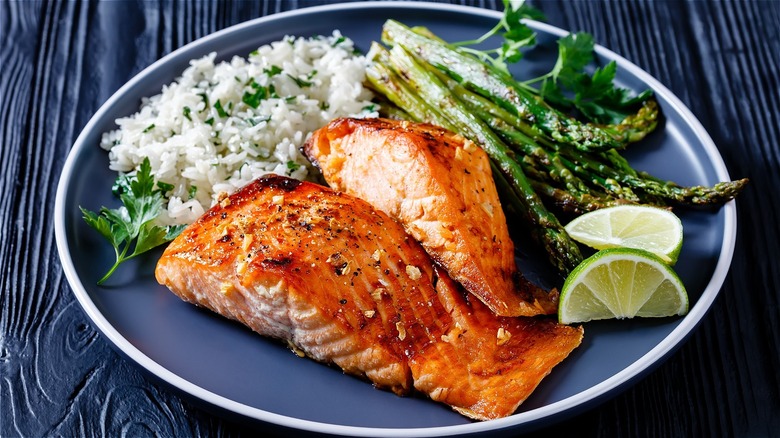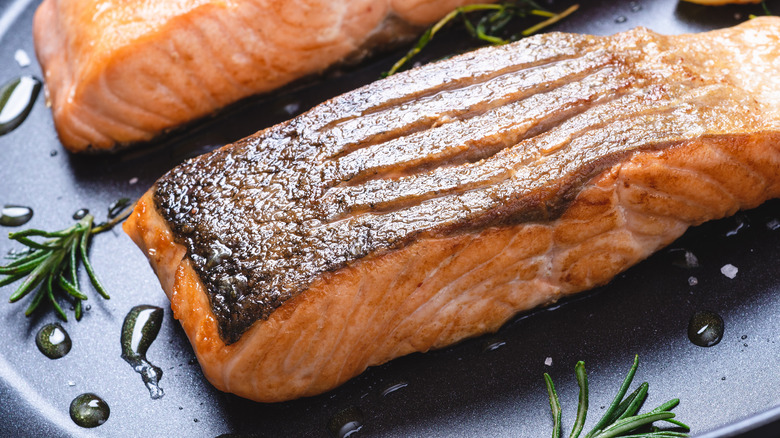The Foolproof Technique For Perfect Salmon Every Time
Salmon may be great for the brain, but pulling off a perfectly pan seared salmon filet is tougher than it looks. Where are going wrong? We might not be adding enough fat.
The idea sounds counterintuitive. Salmon is a superstar because it is delicious, but also because academic institutions like Penn Medicine have been reporting for years that the omega-3 fatty acids in salmon contribute to our heart health. Now health professionals like New York Times best-selling author Dr. Daniel Amen are saying that salmon can also improve our memory and undermine early onset Alzheimer's. With that kind of hype, we want salmon in our regular meal plan rotation — but not if our filets consecutively crumble to bits before we get them to the dinner plate.
Most of us know the basics. Preheat the oil in our pan? Check. Pat salmon with a paper towel until it is thoroughly dry? Check, check. Season with salt, but no pepper — check, check, check. Then things start to fall apart, literally. Even if we are patient while the center of our salmon cooks to the just-right pale pink, and even if we develop a beautiful sear on the skin side of the filet, typically the whole thing starts working against us by scorching and sticking to the pan. Adding more oil or fat can help, and the reason why might surprise you.
The science behind adding fat to cook salmon
First of all, it's not your fault. Salmon is built to stick to the pan, according to Science of Cooking. The proteins of salmon and the make-up of the pans interact by way of chemical bonds that make the proteins stick. Adding enough oil or fat does several things that circumvent that situation. For one thing, the oil fills in any crevices in the pan, which typically has more gaps than we notice at first glance.
Beyond that, an interesting interaction happens when salmon comes in contact with hot oil. The oil singes the outside of the salmon, which we might expect, but that hot oil also engages the water inside the salmon so it releases into the pan in a vapor.
That vapor makes a film that the salmon hovers over rather than sticking to the pan. That vapor also obstructs the hot oil or fat from absorbing into the salmon, reports Science of Cooking. However, take care to avoid overcooking your salmon, since that vapor emits only while your salmon is cooking. Once your filet is cooked through, On The Water points out that without that vapor emitting from your salmon, the oil or fats you are cooking it in will seep into your fish.

